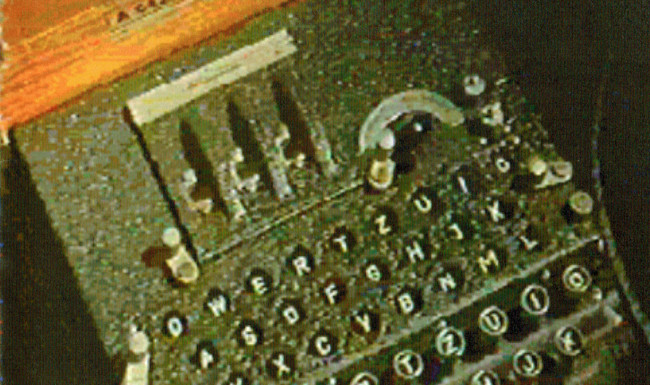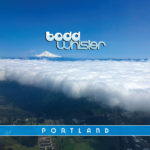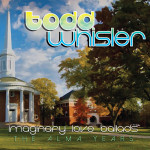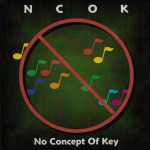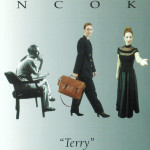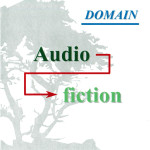Album Notes – Cryptomania
Cryptomania – recorded March through October 2001
The best musical statement I have ever been a participant in has my least inspired playing. Perhaps it’s a cop-out to blame the guitar tone but the clean tone electric guitar has really never been my friend and the desired tone Leyth conjured for this album to me was thick and clunky and I never got into that “zone” as a player. I was just holding down time, establishing and maintaining key and never really injecting my personality or passion into my performance. And it didn’t matter in the slightest.
This album was over a year in forming. After hearing Terry in 1998, Leyth suddenly saw the appeal of recording with bass, keyboards and drums and I believe in his mind he began writing with a larger production in mind. Some of the material that would end up on Crypto he and I began rehearsing in 1999. In fact, my plan was to make an instrumental rock album with Leyth prior to recording my next album of songs but circumstances intervened. Our company was shutting down a plant in North Texas and Leyth found himself on full time travel for most of the year and as such was too exhausted to commit himself to any serious rehearsing, let alone any actual recording. As a result, I undertook making what became No Concept Of Key. Leyth changed jobs and cities in early 2000 and after the dust had settled and he was established in both his career and his new surroundings, our thoughts began to center on more original music. Since he was now in the suburb of Phoenix called Chandler, our only time together to compose and arrange was weekends. Chandler is roughly an hour’s drive from my house in Tucson. We held writing and arranging sessions throughout the months of January and February and made crude demo recordings on his computer – discs which I still have. The first three songs to emerge were March 41, The Enigma Machine and Kill Diablo on the weekend of February 2nd and 3rd, 2001. The following weekend, Friday the 10th and Saturday the 11th yielded closing track The Black Sun, Shadow Land, Modulo 3, Cryptomaniac and The Infinite. Lastly, the next weekend served as midwife to Golgotha, Casa De Segobriga, opening track Factoring Primes and Parallel Extensions.
I really don’t know why Leyth chose to include some random sound effects on the CD – they were derived from a CD Jim had of generic sound effects. A jet screaming overhead both starts and ends the album. An explosion ends Kill Diablo. An arena sized crowd gets us out of Golgotha and into Cryptomaniac. Running water introduces both Casa De Segobriga and Parallel Extensions. However, I’m very glad he did. It gives the album a whole different character since it was something we had never tried before and never attempted again. It also somehow manages to link songs that really aren’t related thematically. Taking the listener’s ear off what they had just heard somehow makes it stronger when they are exposed to the next song.
Of course, it was great making the album. Jim, Rich and Barry are all very easy to work with and very likable people. Leyth and Rich in particular discovered they had a not only a compositional but a playing chemistry. Leyth has always expressed a desire to record an album with just him and Rich. I hope they do one day. I believe half of Leyth’s guitar solos were recorded in a single take – he came in very well rehearsed. Of course, since he was obligated to drive down to Tucson from Chandler and lug his heavy amplifier, he wanted to maximize his studio time as much as possible. There were several impromptu accidental noises Leyth made on his guitar that were in all the scratch mixes we got from Jim and we actually found they contributed character to the songs. So over Jim’s objections we included them in the final mix.
- Factoring Primes. Factoring prime numbers is of course not mathematically possible therefore this title references the impossible. As per usual, the opening track is one of the last songs to be written. In this case, it was the song before the last. Our crude demo starts with the A minor, B flat, G sharp theme on guitars. Once we had Rich in the studio, Leyth asked Rich to conjure some kind of a synth introduction that foreshadowed both the song and the album. I am still impressed that on an album of mostly his music, Leyth doesn’t appear in this song until a full two minutes into it. Again, I am struck by my lack of vision. I tend to record exactly what has been rehearsed. The melodic figure Leyth plays to introduce the song at 2 minutes he had always played on a solo guitar. Once we were in the studio, he suggested a harmony which I rejected since I wanted to hear what I was accustomed to hearing. Also, on an album that was going to be laden with guitar harmony, I wanted the lead guitar to be introduced on its own. Now I wish I’d supported his harmony. We ended up having Barry Sparks play the part on bass which got it into the album but it should have been twin lead guitars. Originally, this song had a more protracted ending. I think even when we recorded the scratch tracks Jim lobbied for a shorter and simpler ending. And he was right. There is a brief 10 second allusion to Run From The Moment at 3 minutes and 10 seconds into this track.
- March 41. Or in Leyth’s vernacular, it’s a march for one. This was the very first track we rehearsed on February 2nd. Leyth had composed it while I was in transit that morning from Tucson to Chandler. For the first minute and a half, it’s a fairly standard song in 6/8 time. Then the whole song changes into a bizarre finger picked rhythm that I had to rehearse heavily in order to be able to perform. At least it was in standard tuning! There’s a little guitar slide Leyth did at 1:52 which is a good example of the kinds of random unrehearsed imperfections that add to the character of the recording. I remember being surprised and delighted when Leyth hangs on the last note of his solo as it harmonizes perfectly over the last chord of the song.
- Kill Diablo. Diablo was the name of my next door neighbor’s dog that barked nearly incessantly when he was left alone in their backyard. Since Diablo is Spanish for the devil, it had an unintended dual meaning. This song again contains an unrehearsed noise on the lead guitar which we left in the final mix. The song felt empty without it. Again this song switches from straight 4/4 timing to a brisk 6/8 time signature in the midsection. Hardly any of these songs stay on the same idea for very long. And of course, the aforementioned explosion from Jim’s CD effects disc ends the song (and allegorically Diablo).
- Golgotha. The first two minutes of this 11 minute epic are the most reminiscent of our approach in A Perfect E and Audiofiction. There is a segue from the acoustic guitars to the clunky clean tone electric guitars which Leyth wishes had been more of a hard transition rather than a crossfade. I wanted to punish him for making me play it by making him listen to it every time he hears the album! As Leyth and I wrote/rehearsed this song back in February, I remember his saying “Try to change scale so that only one note changes between the two chords.” It makes it interesting for him to solo over without sending him down a path of nearly unrelated scales. During the recording of my acoustic rhythm guitars, Leyth became ill and was lying on the couch in the control room at Allusion Studios drifting into and out of sleep. Jim and I were having a disagreement on whether a proposed guitar part fit and Jim had to awaken Leyth so he could listen to my idea. A feeble thumb’s up was all Leyth could muster. To this day, I don’t know if Jim actually mixed it or not since I can’t really distinguish it from everything else that is taking place in the track. When Leyth played me the proposed midsection from 6:10 to 8:15, I thought he’d lost his mind. But he hadn’t. I absolutely hate my playing in the last minute and a half of the song. It’s just so stiff and clunky! It has no flow to it at all.
- Cryptomaniac. This song, by contrast, I loved playing. I also love the huge arena crowd cheering that leads off the track – it’s Todd and Leyth playing to a cheering throng that loves us! This is a melody that Leyth has had since I met him in 1987. As we were arranging this, I channeled a little Iron Maiden from the song Powerslave. I always wanted to make a video for this song where we all dress up like Iron Maiden and actually have Bruce Dickinson join us. He attempts to sing along but his microphone isn’t on since it’s an instrumental. Just picturing Leyth with a big blonde wig to look like Dave Murray always cracks me up. That ending was fairly tough to do since we weren’t in the same at the same time.
- The Infinite. I liked this title for two reasons – first, it starts with drums and rhythm is infinite; also, the open chord change that ascends and ascends the scale forever. Originally Leyth had this song later in the album. As we listened, I kept hearing the opening drum lick from this song following Cryptomaniac. I demonstrated it to Leyth before I left to go home to Tucson. The next morning, I had an email from him saying, “This is what you did” and included the revised (and ultimately final) running order of the album. The only time I’ve ever been right. I remember clearly thinking we needed to switch from 6/8 time to 4/4 and change modulation from minor chords to major ones at 2 and a half minutes into the album. Leyth agreed.
- Casa De Segobriga. Our mutual friend Dave liked to throw out random, useless facts just to be silly. One of them had to do with the Spanish city of Segovia which apparently in Spanish is spelled Segobriga. Leyth who never lets anything go never let Dave forget this and constantly referred to Dave as “Segobriga.” He also largely as a joke began composing a pseudo song called Casa de Segobriga. In 2001, he actually sat down and formally composed this Arabic tinged 8 minute epic. I hope Dave is flattered. This song more so than any other on the album recycles the same theme over and over – I think 8 times in total. It switches between half time, straight time and ultimately double time to build the intensity. When we decided to go completely major key at about 3:40, I channeled my inner Linda Perry and unintentionally quoted “What’s Up” by 4 Non Blondes. For some reason, Jim kept repeating the word “Redemption” during the main verse. Sometimes the music will remind Jim of some other reference and he keeps reiterating it. In tribute to him, I like to refer to this song as Casa De Segobriga (Redemption). I remember having worked out a fairly involved rhythm orchestration in advance but when I demonstrated it for Leyth, he advised me just to keep it simple and play it straight. Now that I hear the final mix, I can see why. It would have detracted from the song.
- Parallel Extensions. Since parallel extensions will never meet, this for me has always been a euphemism for infinity – sort of echoing the 6th song. After we wrote Factoring Primes, I thought we were done. Leyth then looked at me and said, “We need a ballad.” Just to humor him, I played along and began plucking the opening chords of this song. To my surprise, this was exactly what he was looking for and he threw the rest of the whole arrangement together in about 30 seconds. And he was right – it adds to the mood of the album considerably.
- The Enigma Machine. Without question my favorite song on the whole album. We had rehearsed this song back in the summer of 1999 but by the time we got around to recording a demo of it in February of 2001, we had forgotten our bridge. No problem, we just wrote another one. Then while rehearsing my part, I remembered the original bridge which also worked fine. Our solution? Use them both (if you’re curious, the original bridge is what we use to end the song). I’m pretty sure the midsection to this song required an alternate guitar tuning on my rhythm guitar. When Leyth created the cover art for this album, he credited Rich as a co-composer for the 2 and a half minute introduction (which is based on the midsection breakdown that Leyth wrote). “Well, if Rich gets a writing credit for that,” I fumed indignantly, “then I’m taking credit for all of my ideas!” It is for this reason I am credited with cowriting half the songs (including this one). I remember Leyth’s suggesting we take the rhythm guitars out of the mix at 4:30 and introduce the 3/4 theme solely on bass. It made the section feel abbreviated to me at the time but now in hindsight, he was 100% right. It still surprises me that Leyth granted Rich a synth solo at 7:30. That’s how much respect Leyth has for Rich.
- Shadow Land. Leyth’s homage to the place of his parents’ birth – Iraq. It isn’t exactly what I would call a loving tribute. There are very few songs that I play exactly the way Leyth demonstrates it to me but this is one. His idea left no room for improvement. I love the way the main riff sounds on a piano.
- Modulo 3. This was just an idea that appeared during one of our rehearsal sessions back in 1999 that Leyth decided to fashion into a little song. It makes a nice song before the closer. The title refers more to the time signature of the song than to anything else.
- The Black Sun. Normally I would perform the opening rhythm guitar riff that opens this song but first off Leyth has this weird timing that I can never lock down and I thought the piece would lose something if I played it in straight 4/4 time to the beat. So I prevailed upon Leyth to play it himself. I liked the connotative image of Leyth’s playing this alone on his porch watching the sunset. And then we all join him. This is another song where I contributed nothing as a writer or arranger – I played the part exactly the way he wrote it. It is interesting to note this was not the last or second last song to be written. He had this idea worked out well in advance of the remainder of the material on the album. It’s one of the things that I admire so much about him… and that drive me so crazy. How does he do this? And then the album ends similarly to how it started – with a jet flying overhead. However, this time it’s returning home (going from the right channel to the left).


